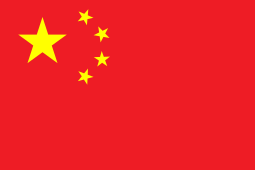
The UDI (Unique Device Identification) field is still evolving and more or less advanced depending on the country.
If you are in any way involved in the medical device business, it may be relevant for you to stay up to date with regulations and deadlines around the world.
That’s why Europe IT Consulting provides you with a global overview that reflects the status as of July 2023.
| Country | Authority | Classification
(low-high) |
Stand of the UDI Link for more information |
|
 |
USA | FDA (Food and Drug Administration) | I, II, III | UDI implemented
For products that require UDI labeling, legacy FDA identification numbers such as the National Health Related Item Code (NHRIC) and National Drug Code (NDC) may no longer be used on product labels or packaging. The product must be labeled with a UDI by September 24, 2023. – This does not apply to Class I devices with a Universal Product Code (UPC), as this can serve as a UDI. More information here. |
 |
EU | European Commission | I, II, III, A, B, C, D | UDI implemented
Regulation (EU) 2023/607 extends the transitional provisions of the MDR to avoid medical device bottlenecks and give manufacturers more time to comply with MDR certification. The deadlines for the application of the UDI :
More Information here. |
 |
China | National Medical products Administration (NMPA) | I, II, III | UDI implemented
The third set of UDI labeling requirements for medical devices in China will take effect on June 1, 2024, following the previous implementation of Class III devices. More Information here. |
 |
United Kingdom | MHRA (Medicines & Healthcare products Regulatory Agency) | I, II, III | UDI not implemented
Since May 26, 2021, the United Kingdom is considered a third country on the EU market. CE marking and certificates will be accepted for the UK market until June 30, 2023. More Information here. |
 |
Japan | Ministry of Health, Labor, and Welfare (MHLW) and Pharmaceutical and Medical Devices Agency (PMDA) | I, II, III, IV | UDI implemented
The companies have to comply to the Pharmaceuticals and Medical Devices Act (PMD Act). Japan was one of the first countries to advocate for a standardized UDI, but is still struggling to align its requirements with UDI expectations on a global scale More Information here. |
 |
Singapur | HSA (Health Sciences Authority) | A (nicht steril), A (steril), B, C, D | UDI not implemented
Currently, there are no UDI labeling or database registration requirements, but once the UDI goes into effect, the requirements must comply with HSA guidance and be implemented in a UDI issuing authority. Simplified registration process for products already approved in the U.S. and the European Union. More Information here. |
 |
Schweiz | Swissmedic | A, B, C, D | UDI implemented
Considered a third country on the EU market since May 26, 2021. The following transition periods apply:
|
 |
Saudi-Arabien | SFDA (Saudi Food and Drug Administration) | A, B, C, D | UDI implemented
Import regulations will take effect at different times depending on the classification:
More Information here. |
 |
Australien | TGA (Therapeutic Goods Administration) | I, IIa, IIb, III | UDI not implemented
The Australian healthcare sector lags behind other sectors, particularly in the supply chain (data and business processes are poorly managed), causing a number of problems.
More Information here. |
 |
Kanada | Health Canada | I, II, III, IV | UDI not implemented
Health Canada has proposed a UDI framework that is aligned with the IMDRF international UDI guidelines. More Information here. |
 |
Südkorea | Ministry of Food and Drug Safety (MFDS) | I, II, III, IV | UDI implemented
Import regulations will come into force at different times depending on the classification (according to risk level).
More Information here. |
 |
Brasilien | ANVISA (Brazilian Health Regulatory Agency) | I, II, III, IV | UDI implemented
ANVISA has set the following schedule for UDI data import:
More Information here. |